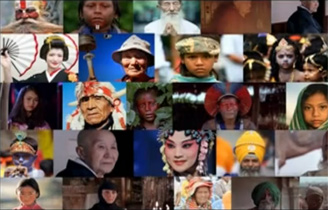New inscriptions on the lists of intangible cultural heritage

The Committee for the safeguarding of intangible cultural heritage meeting in Namibia until 4 December, on Tuesday inscribed five elements on the List of Intangible Cultural Heritage in Need of Urgent Safeguarding and three elements on the Representative List of the Intangible Cultural Heritage of Humanity.
The review of nominations for inscription on the Representative List will continue Wednesday, 2 December.
The inscription of elements from Colombia, Mongolia, Portugal, the former Yugoslav Republic of Macedonia and Uganda on the List of Intangible Cultural Heritage in Need of Urgent Safeguarding aims to help these States draws attention to the dangers threatening these elements. It also testifies to these countries’ commitment to implement safeguarding plans with the communities concerned. Today’s inscriptions bring to 43 the number of elements on the List of Intangible Cultural Heritage in Need of Urgent Safeguarding.
Elements presented by Algeria and Argentina, as well as one multinational element proposed by Andorra, France and Spain, were inscribed on the Representative List of the Intangible Cultural Heritage of Humanity, which includes forms of expression that testify to the diversity of intangible heritage and raise awareness of its importance.
The following five elements were inscribed on the List in Need of Urgent Safeguarding:
Colombia - Traditional Vallenato music of the Greater Magdalena region
Traditional Vallenato music fuses cultural expressions from northern Colombia, songs of cow-herders from the Greater Magdalena region, chants of African slaves, Spanish poetry, dance from the indigenous people of the Sierra Nevada de Santa Marta and European-style instruments. Performed at festivals, parrandas where friends and family gather in the street, and recognized by academia, it is considered vital to regional identity. However, the armed conflict in Colombia, a new wave of Vallenato and declining space for the parrandas remain threats.
Mongolia - Coaxing ritual for camels
Mongol herders have a coaxing ritual, which uses singing, music and chanting to help female camels accept new-borns or adopted calves. A song is performed to the mother tied to a calf, using chants, gestures and music played on a fiddle or flute, to calm and unite them. Most herdswomen practise the ritual, transmitted during adolescence from parents or elders. It is considered important for maintaining community ties but under threat from rural-urban migration and greater use of modern transport.
Portugal - Manufacture of cowbells
The Portuguese cowbell is a traditional idiophone percussion instrument that provides an unmistakable soundscape in rural areas. Alcá?ovas is the main manufacturing centre where the cowbells, traditionally used by shepherds to manage livestock, are made. The practice is transmitted from father to son and requires a series of processes before the handmade iron pieces are polished and fine-tuned. Yet the tradition is becoming unsustainable as new grazing methods, cheaper industrial techniques and fewer cowbell makers are leading to its demise.
The former Yugoslav Republic of Macedonia - Glasoechko, male two-part singing in Dolni Polog
Male two-part singing in Dolni Polog known as Glasoechko, is a traditional practice characteristic of the region. The songs combining drone and melodic voices often accompanied by a flute and bagpipe are performed spontaneously at celebrations. The practice is symbolic of the cultural identity of bearers and is transmitted through imitation. No recordings of the songs exist, which combined with outward migration and a perceived lack of interest from young people has meant that the tradition appears close to extinction.
Uganda - Koogere oral tradition of the Basongora, Banyabindi and Batooro peoples
The Koogere oral tradition is based on the female chief of Busongora, Koogere, who existed 1,500 years ago. The narratives, songs and poems describe her wisdom and philosophy that focus on plenty and abundance as blessings for hard work. Vital to the collective memory of Basongora, Banyabindi and Batooro communities, the practice is transmitted informally by storytellers to younger participants yet transmission is now in major decline. The Runyakitara language is being used less and the number of storytellers diminishing.
The following three elements inscribed on the Representative List of the Intangible Cultural Heritage of Humanity:
Algeria – Sbua, annual pilgrimage to the zawiya of Sidi El Hadj Belkacem in Gourara
Sbua is an annual pilgrimage where participants from Zenata communities in the Sahara visit the mausoleums of saints to commemorate the birth of the Prophet Mohammed. On the seventh day, pilgrims arrive at the mausoleum of Sidi El Hadj Belkacem surrounding a bearer who carries a standard of a saint. Sbua is considered by the communities, given the body of beliefs and rites enacted during the pilgrimage, to be an expression of their history and the links that bind them.
Andorra, Spain, France - Summer solstice fire festivals in the Pyrenees
The summer solstice fire festivals take place in the Pyrenees every year on the same night when the sun is at its zenith. Once night falls, people carry flaming torches from the mountains to light traditionally-constructed beacons. The descent is a special moment for young people, signifying the transition from adolescence to adulthood. It is also considered a time for regenerating social ties and strengthening feelings of belonging, identity and continuity with celebrations including popular folklore and communal dining.
Argentina - Filete porte?o in Buenos Aires, a traditional painting technique
Filete porte?o from Buenos Aires is a traditional, decorative painting technique using vibrant colours and specific lettering styles that can be seen on buses, trucks, shop fronts and increasingly, homes. Incorporating social and religious elements often featuring popular icons of saints, admired politicians, music and sports idols, the practice has formed a component of the city’s heritage. Sayings and proverbs can also be used. Filete craftspeople transmit the technique to anyone who wants to learn with no formal education required.
Address: 81, Laiguangying West Road, Chaoyang District, Beijing, China
Zip Code: 100021
Tel: 86-10-64966526
Fax: 86-10-64969281
E-mail: [email protected]
NEWSLETTER
Leave us your e-mail address, we'll let you know about current events.


